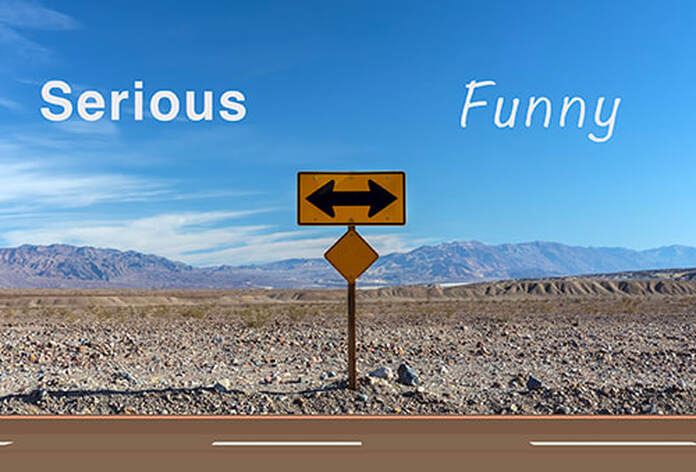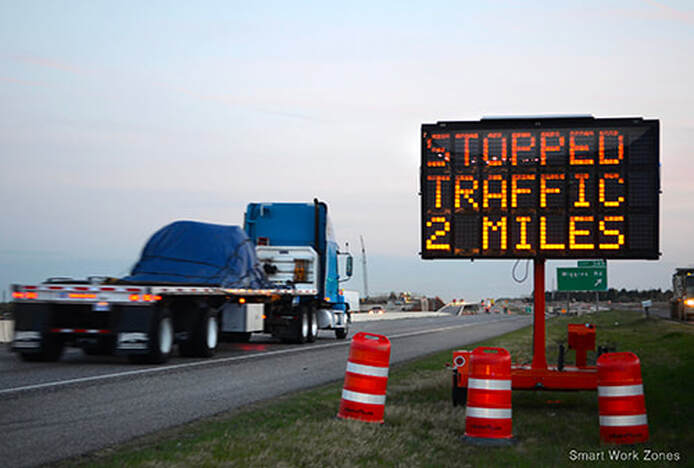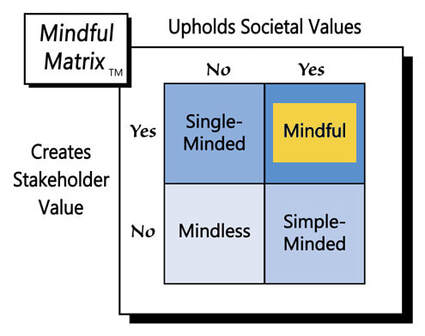author of Honorable Influence - founder of Mindful Marketing
You might think that those who manage and maintain the nation's roads and highways have little need for marketing, but they do. Although they may not be exchanging physical products, they want drivers to embrace ideas that might influence their actions, including messages with important information like:
- Vehicle crashes
- Road closures and detours
- Inclement weather warnings
- Dangerous road conditions
- Safety recommendations
- Amber/Silver Alerts
Unfortunately, whether people are sitting on a sofa or driving in an SUV, they often ignore and or/dismiss all kinds of promotional messages, which is why many advertisers go to great creative lengths to make their ads stand out. Some creators of highway signs have adopted a similar strategy.
There’s not much that can be done creatively with boxy LED letters on a black background, but humor is one amendable approach. Here are examples of highway signs aimed at hilarity:
- Visiting in-laws? Slow down, get there late
- Four I’s in Mississippi. Two eyes on the road
- 100 is the temperature not the speed limit
- Slow down you must. May the fourth be with you
- Hocus pocus, drive with focus
- Buckle up. Windshields hurt
- Jingle bells, speeding kills, buckle up today
- Don’t be a grinch, let them merge
- You’re not a firework. Don’t drive lit
- Use Yah Blinkah
Such signs make many people chuckle, but one organization standing for seriousness is the Federal Highway Administration (FHWA), the U.S. Department of Transportation agency that “provides stewardship over the construction, maintenance and preservation of the nation's highways, bridges and tunnels” while also helping state and local governments enhance mobility, safety, and innovation.
This past December, the FHWA published the 11th edition of its “Manual on Uniform Traffic Control Devices for Streets and Highways.” In Section 2L.07, page 519 of the 1161-page compendium, the agency outlined a variety of specific ways aimed at making traffic messages safer:
“A CMS [changeable message sign] should not be used to display a traffic safety campaign message if doing so could adversely affect respect for the sign. Messages with obscure or secondary meanings, such as those with popular culture references, unconventional sign legend syntax, or that are intended to be humorous, should not be used as they might be misunderstood or understood only by a limited segment of road users and require greater time to process and understand.”
The FHWA has good reason for wanting serious signs. Given that most people casually assume their safety on roadways, it doesn’t hurt to be reminded of driving’s inherent danger, including that a person is much more likely be killed in a car accident than in a commercial airline accident.
The National Highway Traffic Safety Administration estimated that 42,795 people died in motor vehicle traffic crashes in 2022. Furthermore, a leading cause of traffic accidents is distracted driving, which could result from many things, including roadside signage.
Despite my decades of driving experience, I’m no expert on road signs, so I reached out to a few people in my home state of Pennsylvania who are well-qualified to address the FHWA’s new guidelines. Together their agencies wield significant influence over the roads and highways in the nation’s fifth most populous state.
It’s hard to consider roadways in the commonwealth without including the Pennsylvania Turnpike, “America’s first superhighway.” Responsible for operating and improving its more than 550 miles of roadway is the Pennsylvania Turnpike Commission (PTC). Two of its key leaders, CEO Mark Compton and Director of Traffic Engineering & Operations Tom Macchione, shared with me the PTC’s priorities related to roadside signage.
The FHWA’s new sign guidelines should pose little difficulty for the PTC, which already adheres closely to the Manual on Uniform Traffic Control Devices (MUTCD) for CMS. More specifically, the PTC upholds Section 1D.01, p. 31 of the manual’s 11th edition, which requires that traffic control devices:
- Fulfill a need
- Command attention
- Convey a clear, simple meaning
- Command respect from road users
- Give adequate time for proper response
Although the PTC realizes that unconventional messages on CMS may be well-intentioned, it holds that they do not meet the preceding criteria, and adds:
“It has been shown that inappropriate or excessive use of a traffic control device such as a CMS can diminish its effectiveness. There is no objective evidence that the use of unconventional messages on CMS have any greater effect on driver behavior than conventional sign messages. Additionally, the use of unconventional messages have the potential to result in additional time and attention on the message when not understood by the driver, resulting in an increased safety risk.”
For these reasons, the PTC avoids humorous CMS messages and instead uses standard MUTCD-approved traffic safety messages. Consistency is a priority for the PTC, which works hard to comply with both federal and state requirements for signs. The source of the latter guidelines is mainly the Pennsylvania Department of Transportation, or PennDOT.
I reached out to PennDOT Safety Press Officer Fritzi Schreffler, who was happy to weigh in on the recent roadway signage debate. She prefaced that she’d share her personal perspective, which veered somewhat from a more conventional approach.
Schreffler has long been a vocal advocate for nonstandard messages on road signs, as over the years she’s seen many examples of drivers not noticing or ignoring routine signage even after passing it repeatedly. In contrast, she believes humorous messages like “Use ya blinkah” can be effective.
One such PennDOT safety message she identified, “Don't drive star-spangled hammered,” generated significant buzz (no pun intended) across the state. Schreffler suggested there’s great value in messages like that one that stay top-of-mind for drivers, as she reasoned, “If people are talking about the signs, isn’t that a good thing?”
Perhaps the group of people that deals most often and directly with drivers’ reactions to roadway signs is the Pennsylvania State Police (PSP). Although the PSP does not create or maintain CMS signs, its troopers see the signs’ impact firsthand.
A member of the PSP since 2006, Lieutenant Adam Reed is the PSP’s Communications Office Director. Like Schreffler, Reed was glad to offer his personal perspective on roadway signs. He said he’s found that people sometimes do respond to non-traffic control messages, such as “Buckle-Up.” However, he cautioned about giving drivers multiple things to process, and for that reason he appreciates the FHWA’s desire to keep messages simple.
Reed suggested that such simplicity is especially important during inclement weather when drivers have even more to manage and reaction time is especially critical: “Less information to process is usually better and safer.”
However, Reed also recognizes that humor in messages sometimes makes them easier to remember, consequently, he can understand agencies wanting to lean into levity. He added that messages about not driving impaired or distracted can be very helpful, provided that people remember them, and that the PSP is always interested in effective messages.
It’s interesting that among these four very knowledgeable individuals who represent three highly vested stakeholder groups there doesn’t appear to be a clear consensus about content for roadside signage; rather their perspectives touched many points on the spectrum from CMS being simple and direct to signs being humorous and perhaps more memorable.
At first glance, this disparity of opinion may be disconcerting, as some may reason that there will be a breakdown in driving in PA if these influential people are not on exactly the same page. However, the fact that these individuals have some differences in perspectives may be a very good thing.
One big benefit of such diversity of opinion is that it can avoid groupthink, or “reaching a consensus without critical reasoning or evaluation of the consequences or alternatives.” Each individual I interviewed held their own well-reasoned perspective that they clearly articulated for me, and I’m sure they would do the same for others.
At the same time and perhaps even more important, all of these key stakeholders recognized that others have different opinions that also have certain merit, and even if they disagree with those perspectives, they can still respect them and dialogue civilly about the differences.
These two attributes are integral to most successful organizations: It’s very helpful to have individuals and departments that bring different perspectives, including creative vision and risk assessment. It’s also important that the disparate groups can, despite their differences, work together toward a common goal. Marketing firms can especially benefit from this kind of healthy dissidence.
Of course, at some point, decisions need to be made and actions taken, which is what the FHWA’s new manual has done. The consistency it provides for signage within and across state lines should be helpful, even if there are some differences in interpretation and implementation of those guidelines.
Having been fortunate to engage in the conversations above, my own opinion on CMS content is still evolving. Just during the time I’ve been writing this article, I encountered one sign with the straightforward weather-related message: “Dense fog ahead. Use caution.” I was glad that I and other drivers could see that warning.
Meanwhile, as a marketing professor who has studied playful teasing in advertising and who often uses humor in teaching, I appreciate how effective humor can be in gaining attention and boosting memory.
It may be idealistic, but my hope is that the debate about FHWA’s new road sign guidelines will lead to the formation of a ‘middle lane’ that has room for both types of messages without sacrificing driver safety. With so many smart and creative people attuned to this issue, someone will likely find a solution that integrates both sets of benefits.
Clear, singular direction is nice when it’s available. Sometimes, however, life presents competing options, each with attractive features. In such situations, it’s possible that two different approaches both can be “Mindful Marketing.”
Learn more about the Mindful Matrix.
Check out Mindful Marketing Ads and Vote your Mind!




 RSS Feed
RSS Feed